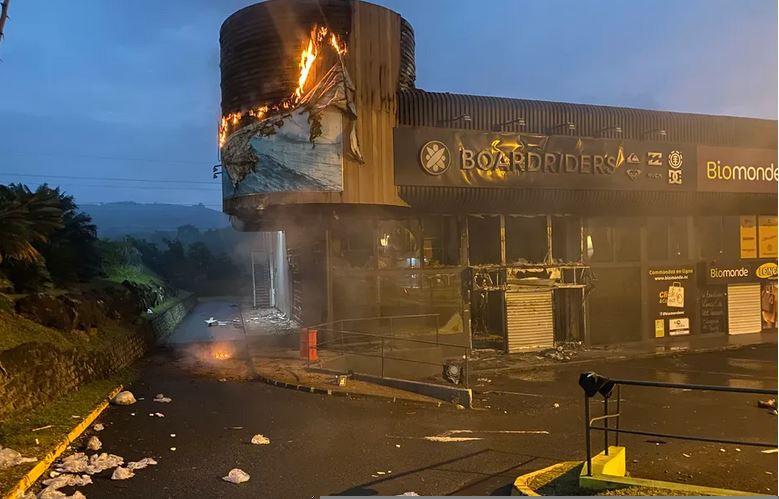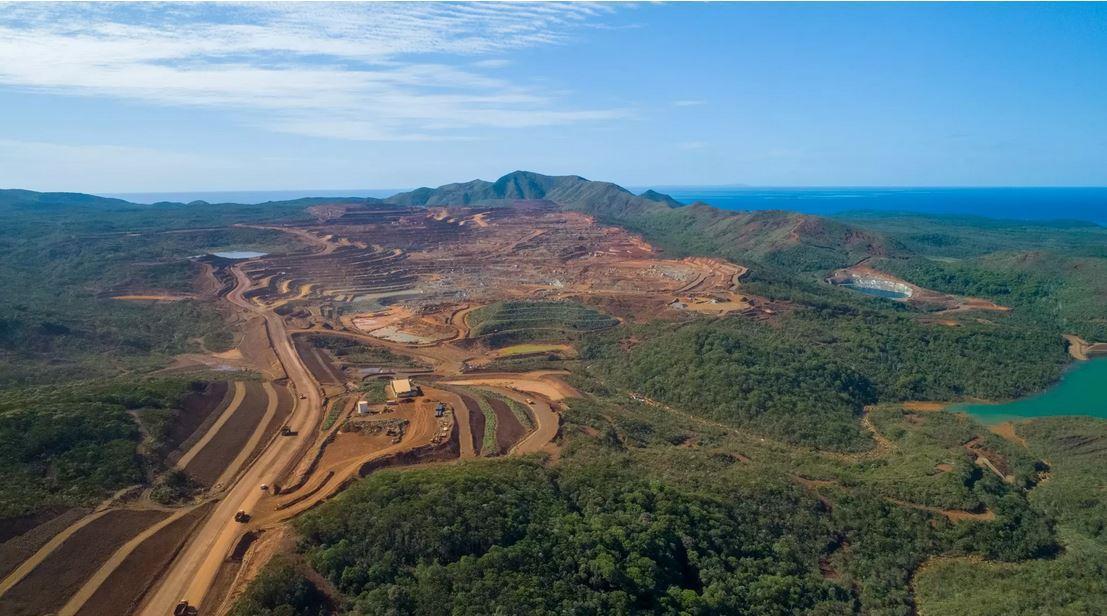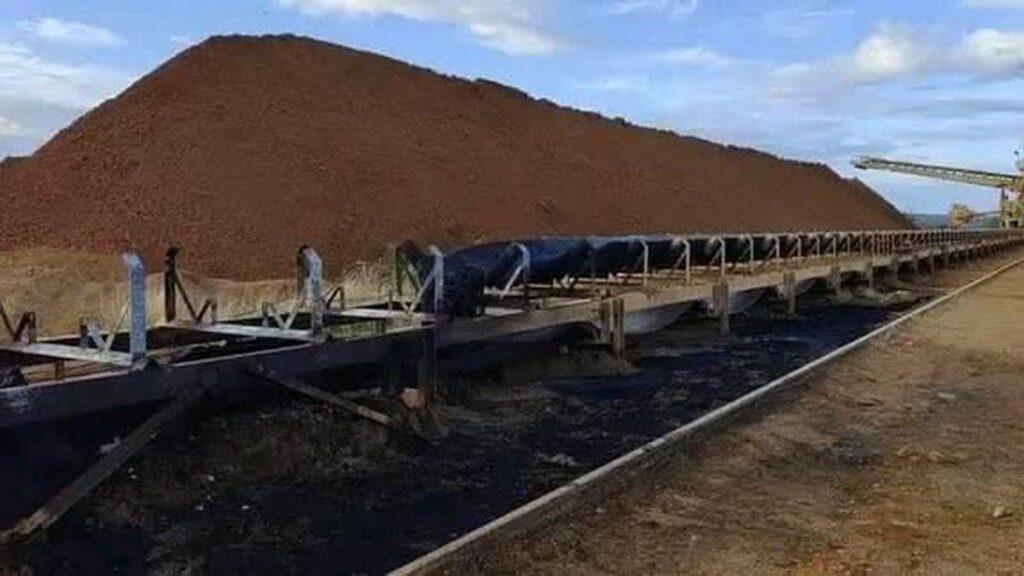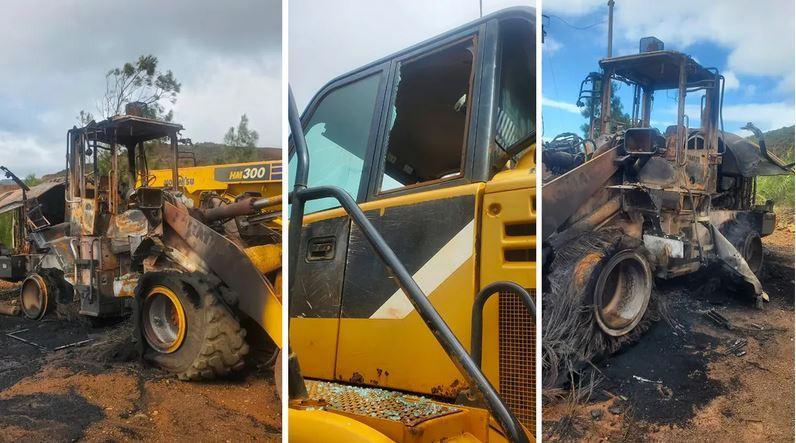
Despite the voluntarism of the French colonial authorities, which announced day after day with a lot of press releases a return to normal, the situation in New Caledonia is far from being settled four weeks after the insurrection of the Kanak youth. And some signs do not deceive, such as maintaining the curfew (6 p.m.-6 a.m. until June 17, the requisition of service stations to the exclusive destination of the cops and soldiers who just was lifted on June 8, or the fact that Tontouta International Airport remains closed “until further notice”. Only Magenta aerodrome has been open to commercial flights since June 5, with internal flights to New Caledonia, Ouvéa and Maré, and nearly 500 French tourists have been blocked on the island for three weeks. As for northern New Caledonia, the army is directly responsible for the supply (and therefore for rationing and priorities) of stores, managing the containers that arrive by barge to Koné.
At the moment, despite the pressure of the 3500 cops and soldiers sent to the site, some of the roadblocks are still being put back in place by Kanak insurgents after their dismantling, in the neighborhoods of Nouméa or along the 50-kilometer road that leads to the airport, without forgetting sometimes to trap them with gas canisters or even to prepare some homemade surprises for the pigs: On June 4 in Dumbéa, for example, a gendarme fell to the bottom of a manhole, while stepping on branches placed on it to hide the opening. “With a depth of 1.20 m, 2 mm diameter reinforcing bars had been positioned vertically at the bottom to create stakes. The gendarme impaled himself on one leg and a metal stake infiltrated between the bulletproof vest and the body vest which was pierced but without penetration, thanks to the Kevlar plate.”
In total, on this archipelago of 270,000 inhabitants, 212 police officers and gendarmes have been injured since May 13, but also a large number of Kanak that the authorities officially refuse to count, but which we know is important and sometimes very serious: several insurgents have lost an eye or have the bones of their faces shattered following police flash ball shots, others have gunshot wounds and are in a coma.

Murderous gendarmes
Two recent examples: on May 29 in Dumbéa around 8 p.m., during an attack on a checkpoint by the cops, many stones were thrown at them as well as rifles being shot at the pigs. The GIGN replied and fired six times “at” the shooter. An insurgent was seriously injured: “Despite surgery, his prognosis is still life-threatening, the forensic findings indicating the presence of two projectiles, one in the chest and the other in the shoulder”.
Then on June 3 at around 4 p.m. at the Col de la Pirogue, at the level of the Saint-Laurent tribe dam, on the strategic road leading to the international airport, the gendarmes opened fire on Kanak insurgents (who, according to the pigs, would have first shot their vehicle): one was shot in the shoulder, and another in the head. It was learned on Saturday, June 8, that the latter, Lionel Païta, had died in hospital, bringing to eight the number of deaths in the territory (five Kanaks, two of whom were from Canala, one from Maré, one from Poindimié, one from Païta / a Caldoche in Kaala-Gomen who had fired against a roadblock / two gendarmes, one of whom was killed by a colleague).
Needless to say, in such a situation, crazy rumors are circulating about the number of “disappeared” well beyond the 8 official deaths, while the prisons of Nouméa and Koné are filling up to the brim and Kanak prisoners are deported to Polynesia and Fresnes, the official toll announces 726 in police custody, 115 referrals to court and 60 committal warrants since May 13.

The nickel industry
To put it briefly, New Caledonia has a quarter of the world’s nickel reserves, exploited in open-pit mines, to supply three pyrometallurgical processing plants. The first two produce ferronickel, a lower-quality mixture used in stainless steel, and the third produces battery-grade nickel (mainly intended for Tesla since 2021).
The first plant (Koniambo Nickel, KNS), the one in the hands of Kanak separatists in the north, has been shut down since February 2024 and forced the withdrawal of its reference shareholder, the Swiss commodity trading giant Glencore. Since then, the activity has been solely focused on maintaining the integrity of the furnaces (if the furnace of a metallurgical plant shuts down without being supplied with ore or electricity, not only can this permanently damage it if the shutdown is sudden, but it also takes months to restart it).
The second factory, the SLN founded in 1880 (the Nickel company, owned 56% by the French group Eramet, itself held at 27% by the French State) located in Doniambo, was already in cessation of payment before the Insurrection, and artificially maintained alive thanks to a state loan of 60 million euros last February. In addition, Eramet also wants to get rid of its metallurgy activities in New Caledonia, especially since it exploits the biggest nickel mine in the world of Weda Bay, on the island of Halmahera (Indonesia) in the middle of primary forests, and that it has just obtained gigantic lithium extraction concessions in Chile and Argentina. In Kanaky, with all five mining sites that supplied it blocked for four weeks, while its stock of ore eventually exhausted, not to mention the riots which took place a few hundred meters from his factory, it is the subject of several counter-insurgency operations of the French State.
As for the third plant, known as the South and located in Goro, owned by the Prony Resources consortium, it is also in bankruptcy, and survives only thanks to a 140 million euro loan from the French state granted in March. Its reference shareholder, the Swiss trader Trafigura, has been wanting to sell its shares for months, and the famous “contract of the century” signed in 2021 with Tesla is already a long way off. As with SLN, Prony Resources’ activities at the mine and at the plant have been stopped since the beginning of the insurrection, even though its hydrometallurgical process is different from that of the other two plants in the archipelago.

At the bottom of this insurrection of Kanak youth, in addition to colonization, racism, humiliation and hardship, there is also the issue of nickel, whose pyrometallurgical plants that provide all the artificial wealth of the island (90% of the archipelago’s exports and 25% of jobs) were already almost bankrupt or on standby before the uprising. This concerns all three main forces present on the archipelago, with the North (Kanak), the South (loyalist) or the State (SLN) factory. In ten years, Indonesia has gone from 0 to 55% of the world’s nickel production (compared to 5% for New Caledonia currently) with Chinese capital, which has caused prices to collapse by nearly 43% in 2023 alone, thanks to a workforce and a price of electricity with unbeatable costs.
Faced with this, the State has been trying for months to turn around a colony that it does not want to let go of at any price, by trying to negotiate with the New Caledonian government (composed of both loyalist and independence parties, and led by the latter) a “Nickel Pact” with 200 million euros in subsidies on the cost of energy, with the counterpart that the factories would commit to supplying the European market for batteries for electric vehicles as a priority; that this local government greatly increases taxes; that it authorizes the export of much more raw ore; and that it temporarily returns the jurisdiction of the mining code to the State.
In short, this “Nickel Pact”, which has gone through eight versions since November 2023 and has still not been signed, is a project aimed at intensifying nickel extractivism for the metropolis, which would transform Kanaky into a purely mining territory, definitively enshrined in a neo-colonial framework. This is in contrast to the famous Nouméa Accords of 1998, which were supposed to buy social peace, and which provided for the use of mining revenues to promote the development of New Caledonia until its possible independence (hence the three referendums on the latter from 2019 to 2021, the transfer of mines and a factory to the Kanak bourgeoisie, and the creation of a local government).
The “Nickel Pact” therefore clashes with both the Kanak politicians who were betting on this resource to found their economic independence (in “The State wants to steal our nickel” mode), and the urbanized Kanak youth who were already denouncing corrupt politicians and who never see the color of all the money poured into the archipelago, or the collectives of Kanak tribes who are increasingly noticing the ravages caused by the intensification of extractivism (on river pollution, health or landslides), and are beginning to advocate an independence that would drive out the French state but also the mines.
It is therefore understandable why the vote in the Senate on 2 April and then in the Assembly on 15 May to thaw the New Caledonian electorate (blocked since 1998), with the consequence of making the colonisation of the archipelago numerically permanent, could have been the spark of an insurrection that methodically devastated the shops and industries of the island’s capital. Destroying 570 companies and causing more than 1.5 billion euros in direct damage, according to the latest report by the High Commissioner (prefect) Louis Le Franc, made public on June 7.

Sabotaging the nickel industry
Since the beginning of the insurrection, one could legitimately wonder what the situation of nickel mines and factories was in terms of sabotage (or not). Apart from the capital Nouméa, studded with roadblocks, looting and fires caused by young Kanak insurgents, what was the situation for example “in the bush” and “in tribes”, where half of the Kanak population lives? Even if we suspect that the information is difficult to filter, it seems that it is mainly the mining structures of SLN (i.e. the State) that have been attacked, but also that of Prony Resources (i.e. the loyalists’ southern factory):
- In Thio, on the east coast, the belt conveyor (a kind of conveyor belt) of the nickel mine that loads ore carriers at the seaside was damaged. The mines of the Plateau and the Camp des Sapins were also attacked, with looting and destruction.
- In Kouaoua, also on the east coast, the ore conveyor to the bay’s loading dock, called “the serpentine” and 11 kilometers long, suffered its twelfth fire in ten days, on June 1.
- In Népoui, a village located in the centre of the west coast, an ore carrier arrived on 2 June urgently, in order to load 19,000 tonnes of nickel to be brought back immediately to Nouméa, in order to supply the SLN factory in Doniambo, which had finished its three weeks of stocks, and was at risk of its furnaces being “irreparably damaged”. Except that in the middle of the night, part of the conveyor belt was set on fire, affecting a hundred meters from the conveyor belt. As a result, the loaded ore carrier arrived safely at port one day late (June 4), knowing that the Doniambo plant now needs to receive such a boat every three to four days to operate. Since then, SLN has sent a second ore carrier, but this time much further north (near the Tiébaghi mine, in Koumac), hoping that the young Kanak will be less hostile to it.
- In Houaïlou, a village on the east coast, the Training Center for Mining and Quarrying Techniques (CFTMC) located on the Poro mine, was reduced to nothing: “All the training tools, mining machines, classrooms, driving simulators were ransacked, vandalized and burned.” It trained young people who wanted to work in the mining sector.
- In Nouméa, on May 9 around 4 a.m., the security guard positioned on the platform had been pacified, before the moorings of the Prony Express ferry dedicated to the transport of employees of the Prony Resources factory were cut. Then in Goro, located south of the island 1.5 hours by car from the capital, on May 23, it was directly the Prony Resources factory that was attacked and lost two vehicles. Since then, it has been kept guard day and night by 35 security guards of the Private Security Group Erys, but the industrial and mining complex is still far from being able to restart, and even sparked its “specific intervention plan” (PPI) on June 7, a program to strengthen its security in the face of external threats. In this case, “current disturbances have forced us to stop our operations. We are facing an interruption in the supply of raw water from Lake Yaté but also, since June 4, we are no longer supplied with electricity” detailed the industrial giant a few days ago, without daring to talk about sabotage …

For an insurrection not to die, it needs, for example, to deepen and overcome its internal contradictions, but also oxygen, a lot of oxygen. It is up to everyone, here, in the heart of the French colonial metropolis which is in the process of crushing the Kanak insurgents who have not yet given up their arms (or their weapons), to give it as much as possible. Out of solidarity, or simply out of hatred of one’s own state…